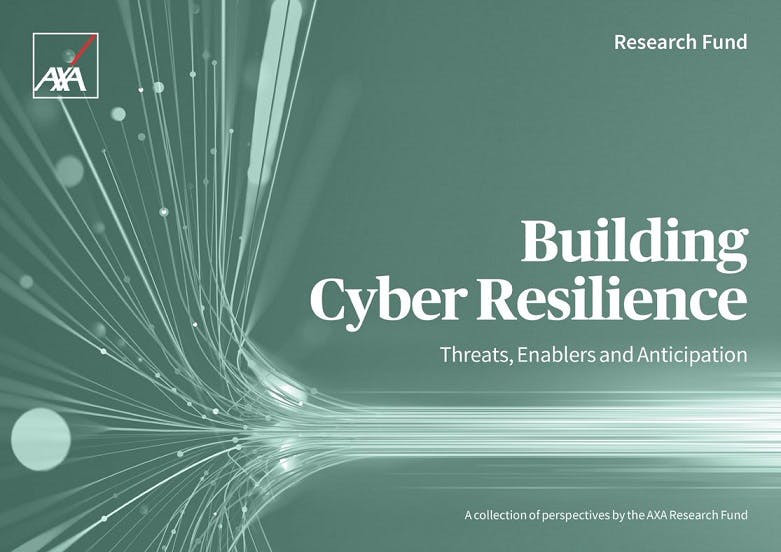In this context, better understanding and estimating cyber risks is crucial to help develop informed strategies, coupling prevention with resilience to damage.
The latest AXA Research Fund publication brings together perspectives from academics, business and organizations on the changing dynamics of the cyber landscape, with a view towards the mitigation of the associated risks and, in doing so, protect what matters.
Read online
Building Cyber Resilience: Threats, Enablers and Anticipation
DOWNLOAD PDFChapter 1: Security and Privacy: Friends or Foe?
Our increasing dependency on technology makes us more vulnerable to cyber threats such as identity theft and email hacks. Solutions to these risks result in techniques that are often invasive and seem to compromise privacy.
Are security and privacy opposing goals? Can we balance the dual-use character of cyber technologies? How should we address the societal impact of cyber security measures?
Chapter 2: Mitigating Cyber-Risk – from Critical Infrastructures to Quantum
The future of cyber security is shaped by the ever-changing nature of cyber-space coupled with the computing speed of today’s machinery, and the acceleration of artificial intelligence and machine learning capabilities. This provides increased opportunities for malevolent attacks.
In this environment, are we able to retrofit resilience into existing critical infrastructures built with traditional risk-based approaches? How can we tackle the security challenges linked to cloud-based operations? Can we prevent our machine learning algorithms from being fooled by another artificial intelligence? Will our information still be secure once the quantum computational power becomes strong enough to decrypt every protection we set?
Chapter 3: Cyber-Resilience of Organizations and States
Building cyber resilience entails action from all economic players – the private sector, states and international bodies.
What does that mean for private organizations? How can the private sector partner to be collectively more resilient? How is cyber-space being regulated, if at all? What are the success factors to move forward collectively in the arena of cyber security? What is the role and stance of states?
Chapter 4: Insuring Cyber-Risk – a Shift in Paradigm
The insurance sector is as a key player in cyber-risk management and the goal of cyber resilience.
What is the current state of cyber insurance market? What new challenges are new technologies such as connected and autonomous vehicles bringing into the insurance business? What are the major challenges for insurers and what are the current limits they need to supersede to succeed?
Chapter 5: Future Scenarios and Trends
What will cyber threats be like in a decade? How can science fiction and strategic foresight help us better envision cyber resilience for tomorrow and what, according to experts, are the future regional cyber trends?



